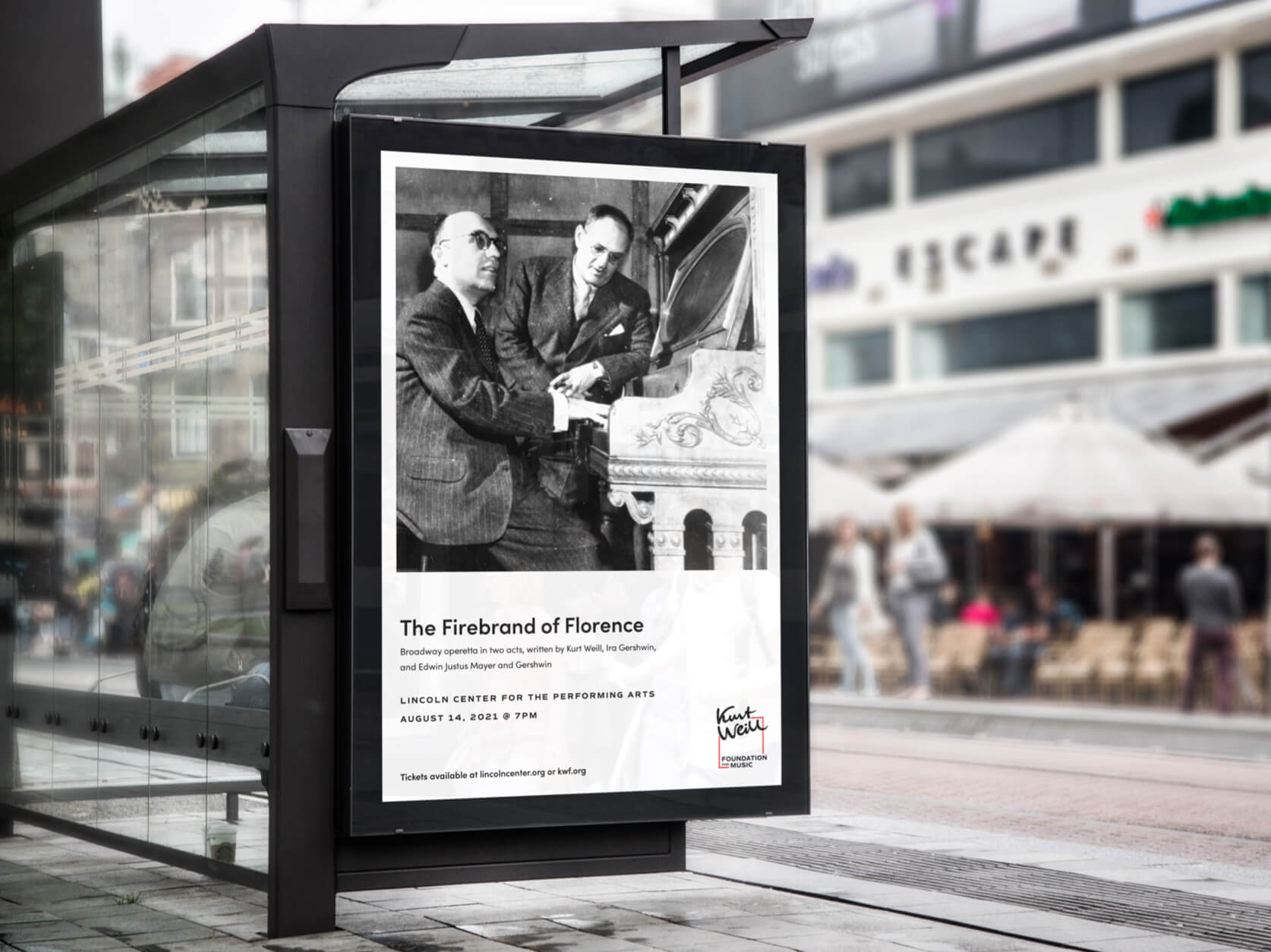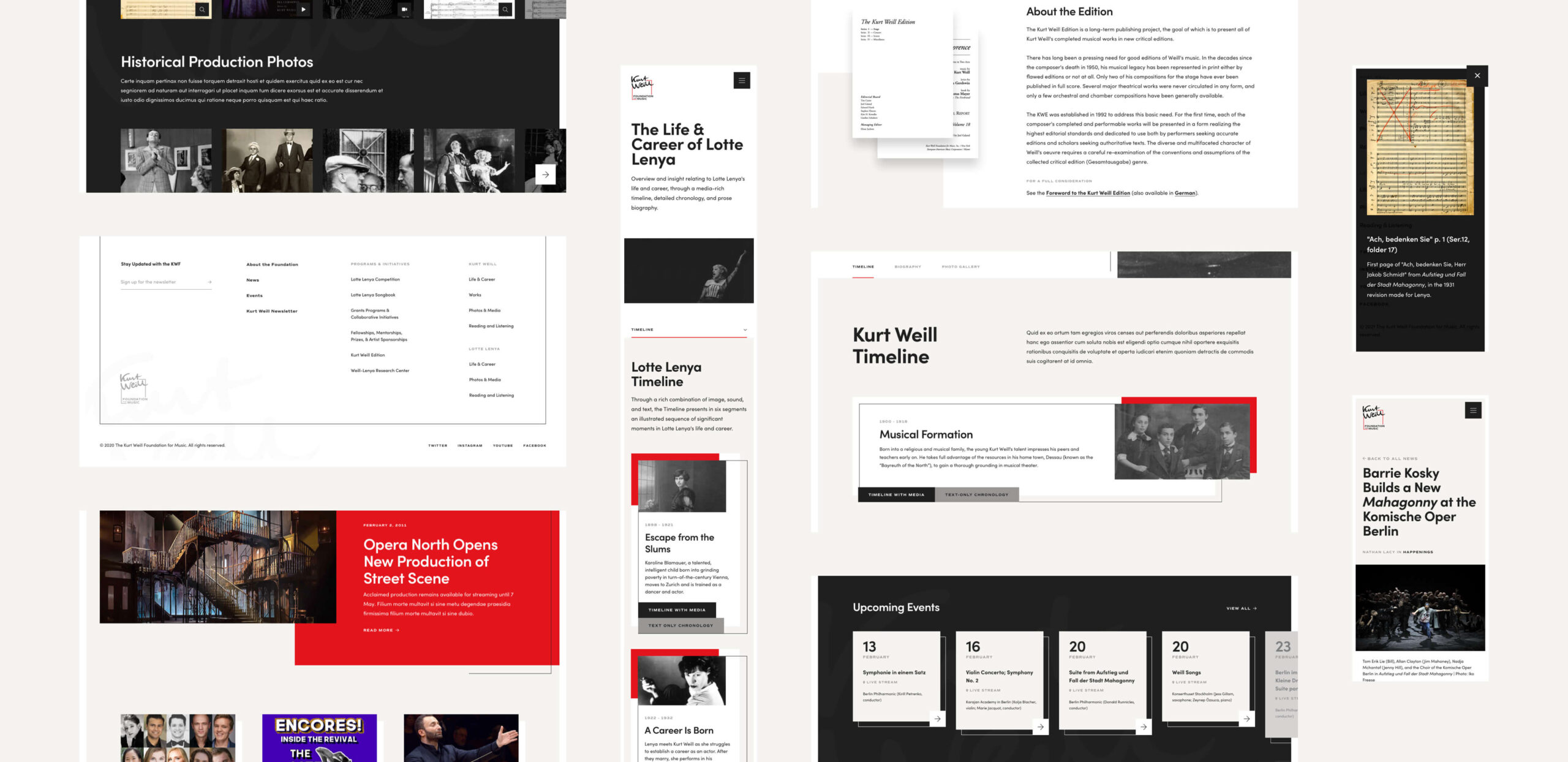The Kurt Weill Foundation
A ground-up rebuild of the nonprofit organization's website built on WordPress
A ground-up rebuild of the nonprofit organization's website built on WordPress


We began the project with a careful audit of the existing site’s 800+ pages. As part of the UX phase, we distilled the content into an intuitive information architecture that successfully organizes the site’s abundance of interconnected content to fulfill the needs of the organization’s myriad programs, desired features, audiences, and goals.
The site houses information about the Foundation’s programming (including the popular Lotte Lenya Competition); an abundance of audio and written content about Weill and Lenya; a searchable database of all of Weill’s works; information about the Research Center facility located in New York City and the content it houses; and information and content from the Foundation itself (news, events, and the Kurt Weill newsletter). To give end users a better understanding of where to find things, we opted for a visually rich megamenu style that provides more context about what can be found where.

The Foundation was looking for a lightweight visual update, including a revised logo. The final logo is modern, but keeps in the spirit of the original logo modeled after Kurt’s signature. The site design features a neutral color palette, modern type, subtle and sophisticated micro-animations, and black and white photography of the namesake artists.




The final build includes several marquis features including a filterable, searchable database of Kurt Weill’s works; rich animated timelines showing the lives of Kurt Weill and Lotte Lenya; and an abundance of audio and video content. The site also features an interactive licensing guide so visitors can find information relating to licensing any Kurt Weill material.




The site’s Events Calendar makes it easy to find performances of works by Kurt Weill and Marc Blitzstein that are taking place around the world, along with relevant events and conferences. KWF manages all of this data in Salesforce, and wanted to avoid the burden of double entry. To accomplish this, we leveraged the Object Sync Plugin, writing additional custom code for a seamless integration.



